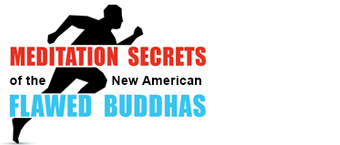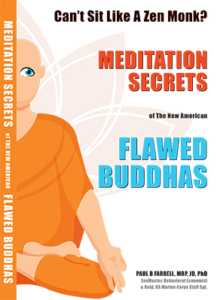Last Updated on February 19, 2021 by Paul Farrell, MRP, JD, PhD

The four very simple & eternal rules for all meditations… From ancient cultures to modern sports!
That’s right, these 4 super-simple, basic and eternal rules work for every kind of meditation throughout history.
Meditation Basics : Four Simple and Eternal Rules
of all Meditation both Ancient and Contemporary
When you get down to meditation basics, there are only four very simple rules, and they apply to all meditations, secular and spiritual, ancient and contemporary, whether you’re moving or sitting, alone or meditating in groups. These rules will work for anyone, anywhere, in any situation, at any time.
They will work for you. These are the rules common to all methods of meditation and they will work no matter what specific activities you select for your meditation, period.
Meditation Basics : Rule #1

Rule #1 of meditation basics is FOCUS. Be aware and fully present of whatever you are doing right now.
Focus on What You’re Doing in this Moment … And Nothing Else!
All meditation techniques, from ancient times to the present, begin with this one fundamental rule:
Whatever you are doing at this moment must be exactly what you are doing at this moment, and nothing else.
No distractions!
Focus, concentrate, be aware and fully present of whatever you’re doing right now – that’s what meditation is all about. Whether you’re working in the office, commuting, eating, dancing, reading, bowling, playing golf or tennis, practicing martial arts, singing or reading to a two-year-old child, if you stay completely in the moment, you are meditating. The great spiritual masters have been teaching us this core rule for centuries. It works.
Meditation Basics : Rule #2

Rule #2 of meditation basics is ANYTHING can be a meditation. Meditation will become part of your everyday life.
Anything You Do can be a Meditation – Anything!!
As long as you’re focused on what you’re doing in the moment, then anything you do can be a meditation. This simple principle – that anything can be a meditation – is not new. Experts from ancient spiritual masters to modern stress management clinicians all know this secret.
Throughout this website you’ll see stories about men and women already experimenting with alternative ways of meditating:
Things they already do and enjoy. Meditation becomes part of your everyday life rather than an isolated ritual performed twenty minutes in the morning and in the evening.
Meditation Basics : Rule #3

Rule #3 of meditation basics is TRUST yourself. Only you can tell if what you’re doing is right for you. No gurus, monks, teachers or anyone out there will ever know what is best for you.
Trust Yourself! The Results are Within You
You are the sole judge of your meditation program: You experiment, pick what to do, where, when, how. You decide if it’s working. What if it doesn’t feel right? Trust yourself. You’ll know. It’s your decision. Period.
Only you can tell if what you’re doing is right for you, whether you’re getting results, whether it’s time to try something else. No outside authorities, no gurus, monks, teachers or anyone out there, will ever know better than you what’s best for you. There’s only one right way, your way. Trust yourself.
Meditation Basics : Rule #4

Rule #4 of meditation basics is keep it SIMPLE. You are already meditating during your daily life, more often than you realize.
Keep it Simple, Everyone Meditates, it Just Happens Naturally!
There really is no big mysterious secret. Meditation is as simple and as natural as breathing. And yet many experts still make such a big deal of it. The truth is, you’re already meditating, it just happens naturally. Most the time you do it without thinking you’re meditating – and without calling it “meditation.”
In fact, if there is a secret, the secret is that you can’t “not meditate,” that’s impossible. Everybody does it, naturally. It just happens. We do it often during the day, in breathing, reading, listening to music, walking, praying, exercising, sports, affirming life goals, working on a positive mental attitude.
Meditating is natural, part of who you are. Keep it real simple. You are already meditating during your daily life, more often than you realize.
So here’s the trick:
Just try to be a bit more aware of how you meditate during each day – that way you’ll find more of the peace you looking for, have more fun, and enjoy a richer, fuller, more successful life in every way possible.
About the Author
Dr. Farrell is a Behavioral Economist. His books include The Millionaire Code; The Millionaire Meditation: Stress Management for Wall Street, Corporate America & Entrepreneurs; The Zen Millionaire; The Winning Portfolio; Expert Investing on The Net; Mutual Funds on The Net; and The Lazy Person’s Guide to Investing.
He also published 1,643 columns on DowJones-MarketWatch and for years was their #1 traffic-generating columnist. Before the Internet, he edited & published FNX: Future News Index, a financial newsletter for stock market traders. Earlier he was a Wall Street investment banker with Morgan Stanley, Executive Vice President of the Financial News Network; and Associate Editor of the Los Angeles Herald Examiner.
He has a Doctorate in Psychology, Juris Doctor, Masters in Regional Planning and Bachelor of Architecture. He worked on the Esalen organic farm and served in the U.S. Marine Corps as Staff Sergeant in aviation computer technology.








